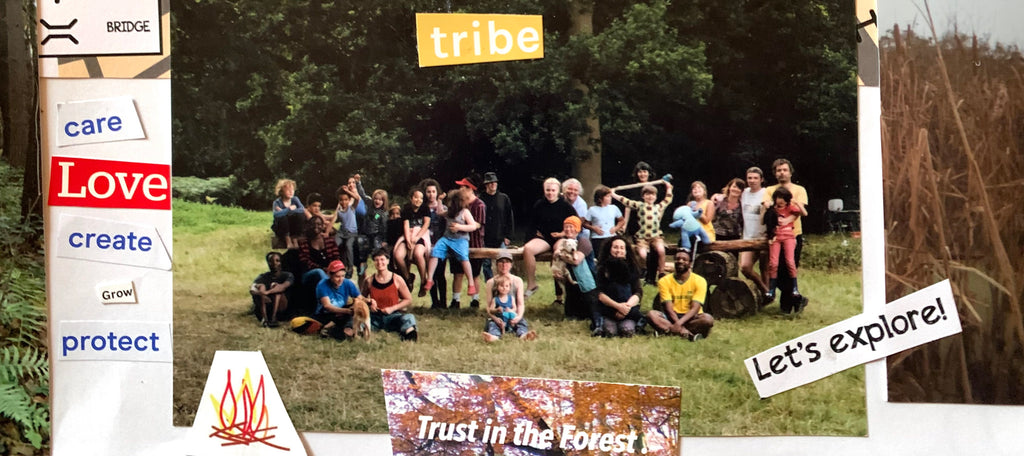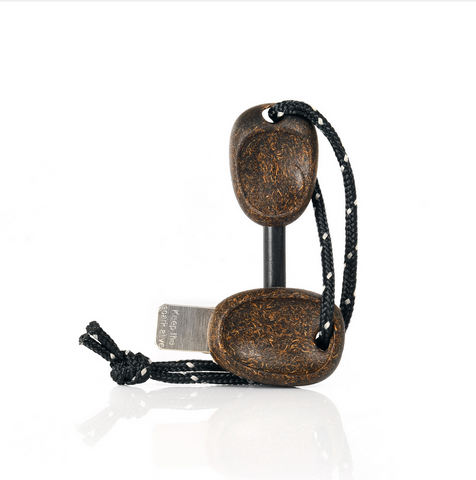The Feel Good Inside & Out project took place at the Outdoor People Community Shop in Hackney over November and December. As a Participatory Action Research project, the topics for investigation and the methodologies were determined by the group. Each week the group would reflect on the previous session, and using that reflection, agree on a question and activity to investigate.
Through the project, we wanted to explore ways we could help make people feel better physically and mentally, by getting outside every day. The research team included four adults and three children, supported by two members of staff from Outdoor People. What follows is a summary of the discussions we had, and the suggestions that were made, in each of the sessions.
We hope by reading about our project, you will be inspired to develop your own set of prompts, hints, tips, thoughts or ‘call-to-actions’ that will help you, your friends and family to go outdoors more regularly. How do you connect with nature even when you don’t have much time, stay out on your adventure for longer, or go out on an adventure even on the days you ‘don’t feel like it’?

Meditation, mindfulness, noticing
‘Do you like to meditate on a tree with lots of bird songs (a very green tree)?’ Emily
‘Like me, do you enjoy slightly dark places that are next to the sea, or other places to meditate and close your eyes?’ Luca
Although we started with a broad theme of ‘good health’, quite soon the discussion centred upon how time spent outdoors helps with mental well-being (although there was a recognition that mood also affects physical wellbeing). We compared our experiences of being outside, what motivates us to go on adventures, and where each of us likes to go to find space and calm.
The question we asked…
How does going outdoors make me feel – especially when I stop to clear my mind, take a breath and notice my surroundings?
From this discussion, we drew up a list of suggested activities, to create a personal path to getting outdoors more often. Here is a selection of suggestions:
- Add a small exercise/meditation routine to your walk (a walk that reconnects).
- Keep a diary about outdoor activities and how they make you feel.
- Walk and take pictures of significant places or things you notice. Stop, breathe, take in what you see, and start again. If you have left your phone behind, take a moment to lay down a memory. If you have brought pen and paper, make a note or a drawing. If you have your phone, take a picture or make a voicenote.
- Share pictures and videos on social media to motivate other people.
- Walk alone or with a friend. Go on a walk with a friend. Share with each other how you feel at the start, in the middle and at the end. Make notes. Go for a walk with five friends and ask them to rate how they feel before and after and why?
- Take a problem, or something that is troubling you, for a walk. Stop, observe and reflect on surroundings. Notice any changes to the way you view the problem.
- Take part in a Feeling Good 5 Step Challenge: look out the window (how do I feel?); walk to the end of the road (how do I feel?); walk to the park (how do I feel?); sit under a tree for 10 mins (how do I feel?); go out all day (how do I feel?)

Creating positive routines
Making time to get outdoors was quite often an issue. Claudia wished she had more time to plan and organise her adventures. Yaa would go on mental adventures while she was working, or when she was too busy with work to leave home. Time out on the adventure felt restricted too. One of Claudia and Emily’s adventures had to be cut short before they reached Hackney Marshes.
We wanted to explore how we could make going outdoors a fixture in our daily routine.
The question we asked…
How do I make discovery, adventure, and exploration a daily part of my life?
We talked about the different ways we interpret the word ‘routine’ - and how it could have either a healthy or unhealthy connotation. Using a word association exercise, we created a list of similes and parallel concepts: plan, efficient, broken, list, sleep, difficult, skip, habit, pattern, won, chore, secure, imprisoned, everyday, cosy comfort, pattern, rhythm.
Some of us found it difficult to identify what our routines were, because we felt we had no routine and therefore it was difficult to change it. Others had a very strict routine with frequent reminders, for example through phone alerts, to do different things, and in this respect, it became harder to disrupt routines.
From this discussion, we shared some suggested activities that we could use to make getting outdoors part of our daily routine. Here is a selection of suggestions:
- If you feel like you’re stuck in a routine, set yourself a challenge that will break the routine.
- Be creative when going outside, as it may encourage you to go outside and be creative again.
- If you’re working from home, go on a ‘false commute’. Use the time normally spent commuting to go for a walk around the park. This can help switch your mindset from ‘home’ to ‘work’ and back.

Making small changes that lead to bigger changes
The question we asked…
What is the smallest change you can make to your routine to make the greatest difference to your day?
Claudia and Emily tried ‘looking up’ when they went on a walk. They discovered different trees, ones that lose their leaves and ones that keep their leaves all year round. When they were visiting the British Museum, it inspired Emily to look up and both she and Claudia discovered architecture they had never seen before.
Sheryle mentioned she knows 7 or 8 different routes home from nursery and she takes different routes each time so that she and Daisy can see different things. Many of us shared how much we enjoy discovering new places.
‘We stopped for a moment in Haggerston Park, on our way back from the nursery and noticed a tree with red leaves. We hadn’t seen it before and had never noticed that some leaves on trees go red. It looks Christmassy!’ Sheryle, adult.

Being conscious of mind/body
While our focus was upon mental wellbeing, we also discussed how being aware of our bodies and our surroundings affected our mental wellbeing. Some of us said we find it difficult to listen to our bodies. Sometimes our minds are too loud and there’s ‘much ado about nothing’.
Beth observed that being conscious and present in the outdoors and its benefits are something that each of us need to explore and learn for ourselves. Each of us finds our own pathway, and the motivation to do it comes from an awareness of how it benefits us.
From this discussion, we shared some small changes we made on our daily walk and how they made us feel. Here is a selection of suggestions:
- Trying a new thing every day:
- Looking for shapes in nature (e.g. triangles or circles)
- Small changes in the way we physically move through the world makes a difference to his mental state: walk faster, walk taller, wak slower (as slow as a 2-year old).
‘When I walk I go into a dream state. It helps me clarify and question things. After being at work looking at a screen, I go for a walk and move my body.’ Mateo, adult.

Maps
Everyone got enthusiastic about maps! Luca said that the Wild Walk map we used for our Wild Walk on Sunday (Victoria Park & Mile End), ‘inspired me to make a map when I am outdoors. I would track my feet and draw the outline of the park’. He also learned about keys and symbols on our last Wild Walk.
Jess introduced us to the amazing Greenground map by Helen Ilus. The map is inspired by the iconic London tube map as an alternative sustainable transport map. The ‘green lines’ are representing the connections between parks and could be walked and cycled.

Inspiring others to go outside
We all felt that going outdoors helped with our mental wellbeing, but in different ways - some people liked to go outdoors to get a burst of energy, some said it helped them find calm and respite, sometimes people just wanted to get a break from being in the house.
Everyone had a different motivation, and everyone had their own ‘biggest barrier’ to getting outside. Nevertheless, identifying our personal motivations and barriers helped, as it allowed us to create more personalised strategies for behaviour change, strategies that would stay the course.
Since this workshop was the last but one, we wanted to start thinking about what we wanted to tell the world and what we’d like to take away from this project. We all agreed that we wanted to inspire ourselves and inspire others to go out more.
Capture your adventure!
Take a note of what makes you grateful
Take a note of what makes you feel good
Think of something that inspires you or might inspire others

‘Mountains, a tree and a butterfly. I feel good when I see these things.’ Emily, child.


